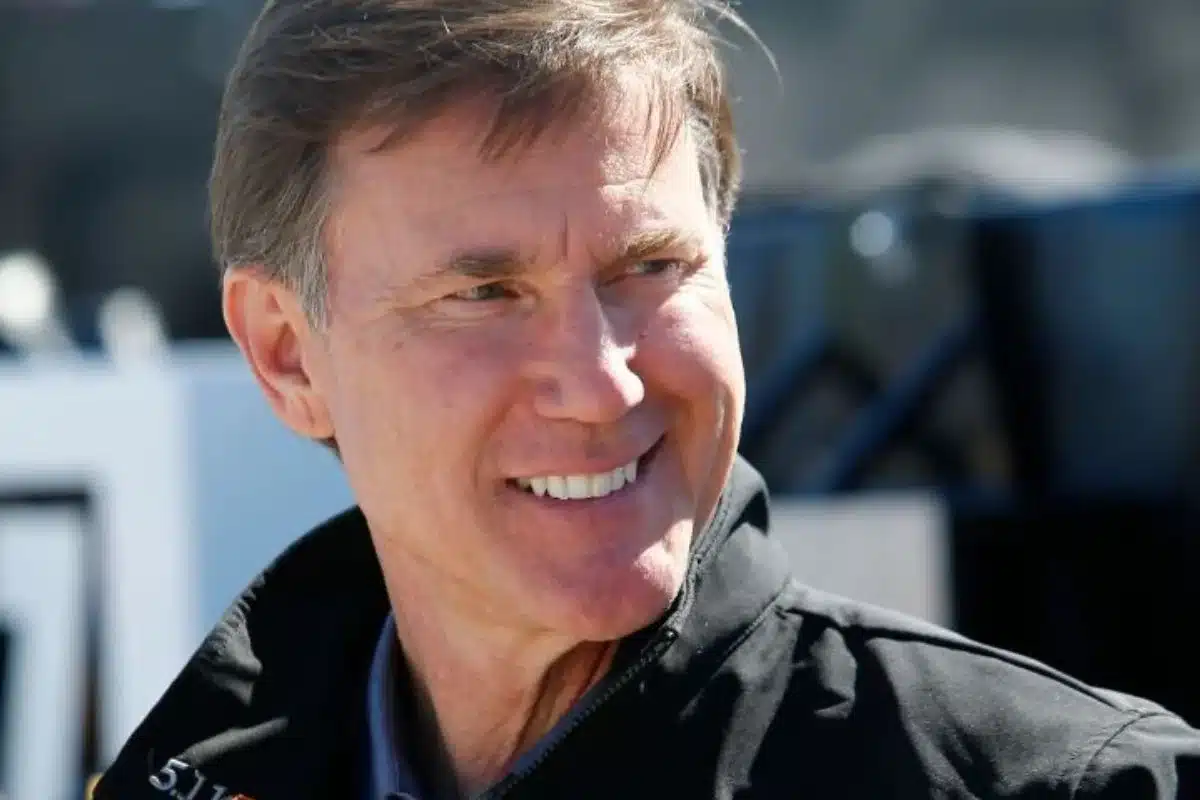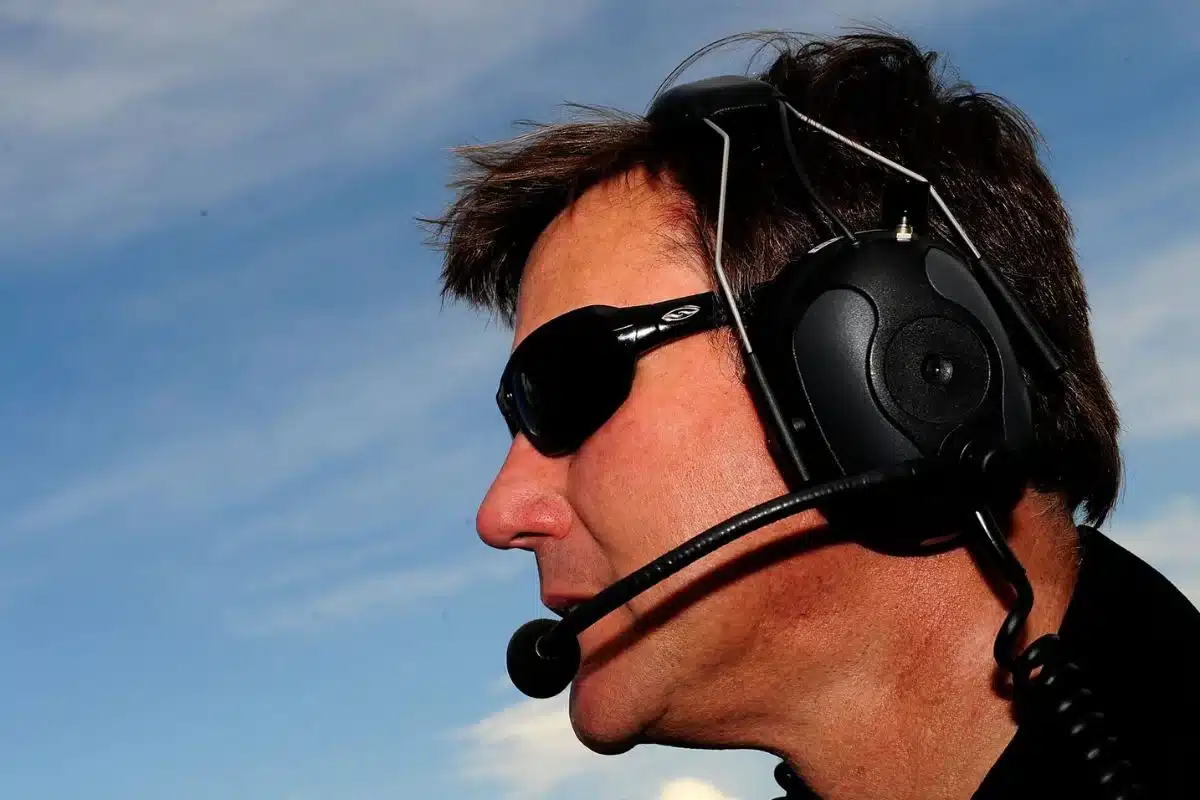Elton Sawyer Take on Bristol Race: Elton Sawyer’s unique viewpoint on the recent Bristol race sheds light on the vital balance between speed and tire preservation, reshaping strategies in short track racing. In maneuvering the high banking and concrete surfaces of Bristol Motor Speedway, Sawyer’s insights have prompted a re-evaluation of tire management tactics for drivers and teams. His perspective hints at a game-changing shift in the approach to addressing tire wear challenges at such demanding tracks. This pivotal analysis by Sawyer offers a fascinating perspective on the ever-evolving dynamics of NASCAR races.
Key Takeaways
- Elton Sawyer praises Bristol race for record lead changes.
- Sawyer acknowledges dynamic and unpredictable race.
- Tire wear challenge positively impacts competitiveness.
- Strategic tire management crucial for success at Bristol.
- Bristol race sets new standard for short track excitement.
NASCAR’s Tire Wear Dilemma at Bristol Motor Speedway
The issue of tire wear at Bristol Motor Speedway poses a significant challenge for NASCAR, requiring strategic solutions to navigate the demanding track conditions effectively. During the recent Food City 500, the extreme tire wear highlighted the complexities drivers face at this track. Elton Sawyer, NASCAR’s senior vice president of competition, views this challenge as an opportunity for innovation rather than a setback. In a discussion on SiriusXM NASCAR Radio, Sawyer emphasized the need for a proactive approach to address the tire wear dilemma at Bristol.
Tire wear at Bristol Motor Speedway is not a new phenomenon, but it continues to test the skills of drivers and the strategies of racing teams. The high banking and concrete surface of the track put immense pressure on the tires, leading to rapid degradation. This dynamic environment demands a delicate balance between speed and tire management, making it a critical factor in race outcomes.
Sawyer’s perspective on the tire wear issue reflects a strategic mindset aimed at turning challenges into advantages. By acknowledging the difficulties posed by Bristol’s track conditions, NASCAR can work towards developing innovative solutions that enhance both the racing experience and the competitive landscape. This approach aligns with NASCAR’s commitment to pushing boundaries and fostering continuous improvement in the sport.
“If you look at our racing in general, and we talk so much about or product at Daytona, Talladega and Atlanta; great racing and our intermediate package has been phenomenal, great racing, we’ve needed to work on the short tracks and road courses,” Sawyer said during a Wednesday morning appearance on SiriusXM NASCAR Radio.
View this post on Instagram
Goodyear’s Investigative Role
Goodyear’s response to the extreme tire wear challenges at Bristol Motor Speedway has prompted a thorough investigation led by Greg Stucker, the director of racing for the company. Stucker, a seasoned expert in the field, expressed deep concern over the unforeseen level of tire wear witnessed during the recent event at Bristol Motor Speedway. Despite the company’s history of successful tests and races, the abnormally high rate of tire degradation during this particular race raised significant red flags within the organization.
The investigation launched by Goodyear aims to uncover the root causes behind this unexpected tire wear phenomenon. Various factors such as track conditions, temperature fluctuations, car setups, and tire compound compositions are being constantly analyzed to pinpoint the precise reasons for the accelerated tire wear. Stucker’s leadership in this investigation highlights the company’s commitment to providing high-quality, durable tires that meet the demands of NASCAR racing.
As the director of racing, Stucker brings a wealth of knowledge and experience to the table, making him well-equipped to lead this complex investigative process. His attention to detail and analytical approach are invaluable assets in unraveling the mystery behind the extreme tire wear at Bristol Motor Speedway. The findings of this investigation are eagerly awaited by teams, drivers, and fans alike, as they hold the key to preventing similar issues in future races.
“I would agree [that] tire wear is always the goal. That’s what people wanted to see. It creates comers and goers and who manages tires the best. But we thought we were in a really good spot last year with the tire as we raced it in the fall, and something is different now. So, this is too drastic,” Stucker said. “We tested here last year with the intent to come up with a tire package that generated more tire wear. That was the request from NASCAR and the teams.
Unintended Success
Amidst the challenges posed by extreme tire wear at Bristol Motor Speedway, the unexpected outcome of a record-breaking number of lead changes and diverse race leaders has sparked significant interest in the racing community. The high levels of tire degradation created a scenario where drivers had to navigate not only the competition but also manage their tires effectively. This led to a dynamic race where positions constantly shifted, providing fans with an exhilarating and unpredictable viewing experience.
NASCAR Senior Vice President Elton Sawyer has applauded this unpredictability as a positive development for short track racing. The increased number of lead changes indicates a more competitive field, where drivers had to adapt their strategies on the fly to stay ahead. This type of racing not only tests the skill of the drivers but also adds an element of strategy as teams must make split-second decisions to gain an advantage.
The unintended success of the Bristol race highlights the importance of factors beyond just raw speed in determining the outcome of a race. It highlights the significance of tire management, driver skill, and team communication in achieving success on the track. Moving forward, this event may serve as a blueprint for enhancing the excitement and competitiveness of short track races, encouraging further innovation and strategic thinking within the sport.
Driver Feedback and Challenges
Driver feedback plays a pivotal role in understanding the challenges faced on the track and provides valuable insights for improving performance in competitive short track races.
Elton Sawyer, in his analysis of the Bristol race, underscores the critical importance of tire wear in shaping the competitiveness of short track events. By voicing the sentiments of drivers who yearn for more pronounced tire degradation, Sawyer sheds light on the strategic dimension of tire conservation. This emphasis not only highlights the skill required to manage tires effectively but also the discipline needed to navigate the race dynamics successfully. Drawing parallels to seasoned drivers like Darrell Waltrip, Sawyer stresses the significance of experience and tactical acumen in tackling the challenges posed by tire wear.
Driver feedback serves as a channel for translating on-track experiences into actionable insights for enhancing performance. The nuanced understanding of tire behavior, racing conditions, and competition dynamics produced from driver feedback empowers teams to fine-tune their strategies and setups. This feedback loop, enriched by the collective wisdom of drivers and crew members, forms the bedrock of continuous improvement in the pursuit of excellence on short tracks. As drivers expresses the challenges they encounter, from tire management to racecraft, they contribute invaluable knowledge that fuels innovation and drives progress in the competitive arena of short track racing.
Future Plans and Testing
In preparation for upcoming races, NASCAR and its technical partners are strategically planning extensive testing programs to refine tire wear characteristics and optimize performance on short tracks. The insights gained from the Bristol race will be instrumental in shaping the future plans for enhancing tire wear at other similar tracks. By leveraging the data collected and feedback received from drivers, NASCAR and Goodyear aim to make significant advancements in tire technology that will benefit both the competitors and the overall race experience.
These testing programs will not only focus on improving tire wear but also on enhancing overall performance on short tracks. By fine-tuning the tire compounds and constructions, NASCAR and Goodyear seek to provide drivers with better handling and grip, leading to more competitive racing and closer battles on the track. The ultimate goal is to create a balance between durability and performance, ensuring that drivers can push their cars to the limit without compromising safety or speed.
Despite the challenges faced at Bristol, NASCAR and its partners remain committed to the pursuit of excellence in tire development. The dedication to continuous improvement and innovation highlights their unwavering determination to deliver exceptional racing experiences for fans and teams alike. The upcoming testing initiatives will play a pivotal role in shaping the future of short track racing and setting new standards for performance and competitiveness in NASCAR.
News in Brief
The tire wear issue at Bristol Motor Speedway has prompted Goodyear to investigate and make necessary adjustments. Despite the challenges faced by drivers, the unintended success of the changes implemented has been notable.
Moving forward, continued driver feedback and testing will be pivotal in developing future plans for tire wear management at Bristol and other NASCAR races. The collaborative efforts between Goodyear and drivers will play a critical role in shaping the future of racing at these demanding tracks.
Our Reader’s Queries
Q. Who got the pole for Bristol?
A. Ryan Blaney secured the pole position for Sunday’s NASCAR race at Bristol Motor Speedway. The reigning Cup Series champion clocked an impressive time of 15.356 seconds, navigating the 0.533-mile concrete track in Bristol, Tennessee, during Saturday’s qualifying session.
Q. Who won the Nascar race at Bristol Tennessee?
A. Denny Hamlin clinched his fourth victory at Bristol Motor Speedway in the Cup Series, marking his inaugural win at the Food City 500 on Sunday.
Q. Who won Bristol 2024 Nascar?
A. Before the start of the 2024 NASCAR season, Denny Hamlin confided in select family and friends, expressing his belief in the potential for a significant year for his No. 11 team. Known for his confidence, the seasoned racer demonstrated his prowess at Bristol Motor Speedway on Sunday, showcasing his two-decade experience in the sport and his remarkable skill in controlling a racecar.
Q. How long is Bristol race track?
A. The current configuration of the track spans 0.533 miles (0.858 km) at Bristol Motor Speedway, featuring turns with banking ranging from 24 to 30 degrees. Additionally, the straightaways are banked at four degrees at the bottom, gradually increasing to nine degrees at the top.
ALSO READ: Tony Stewart 2022 Scandal With Kevin Harvick & Nextgen Cars


